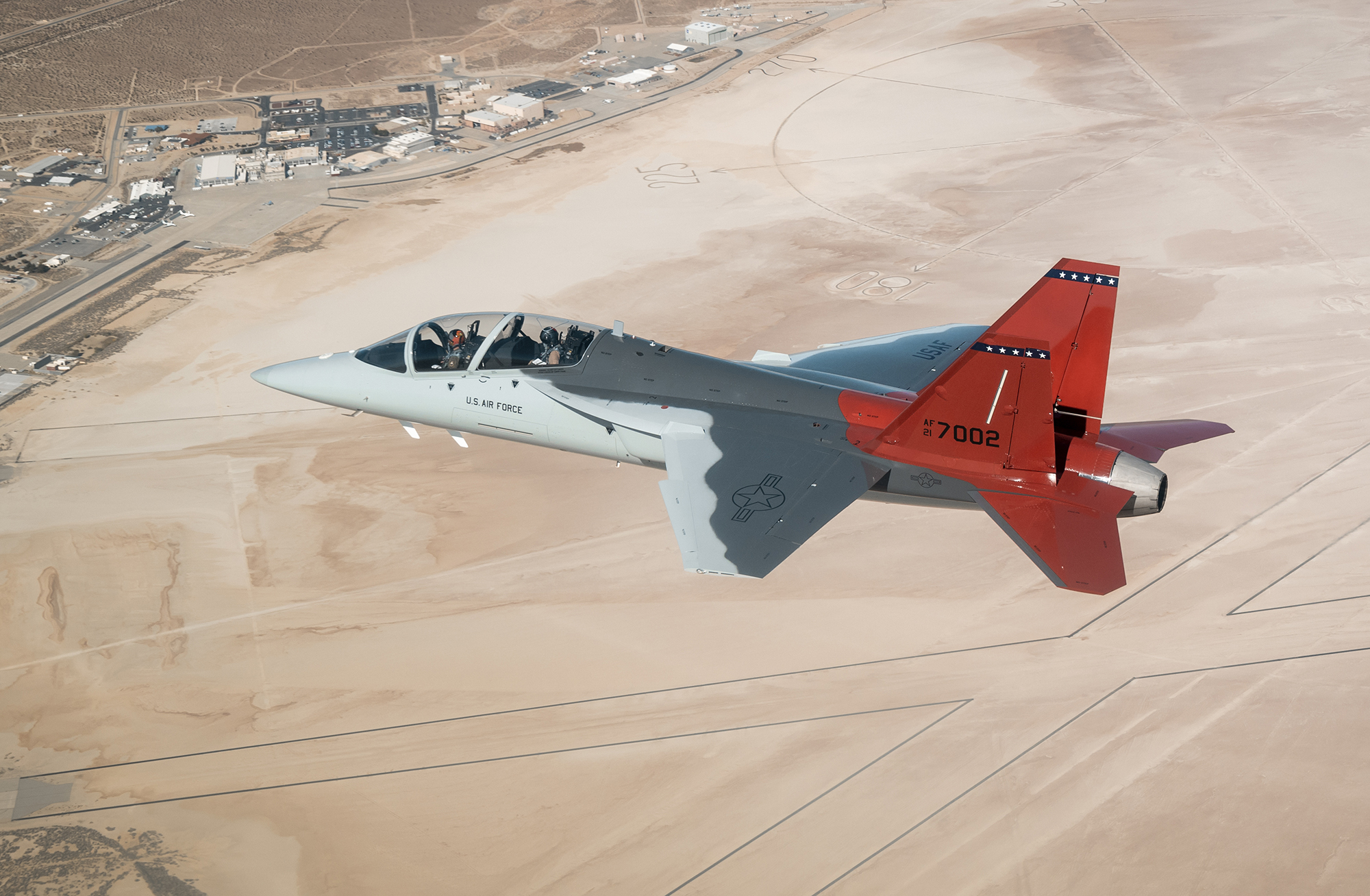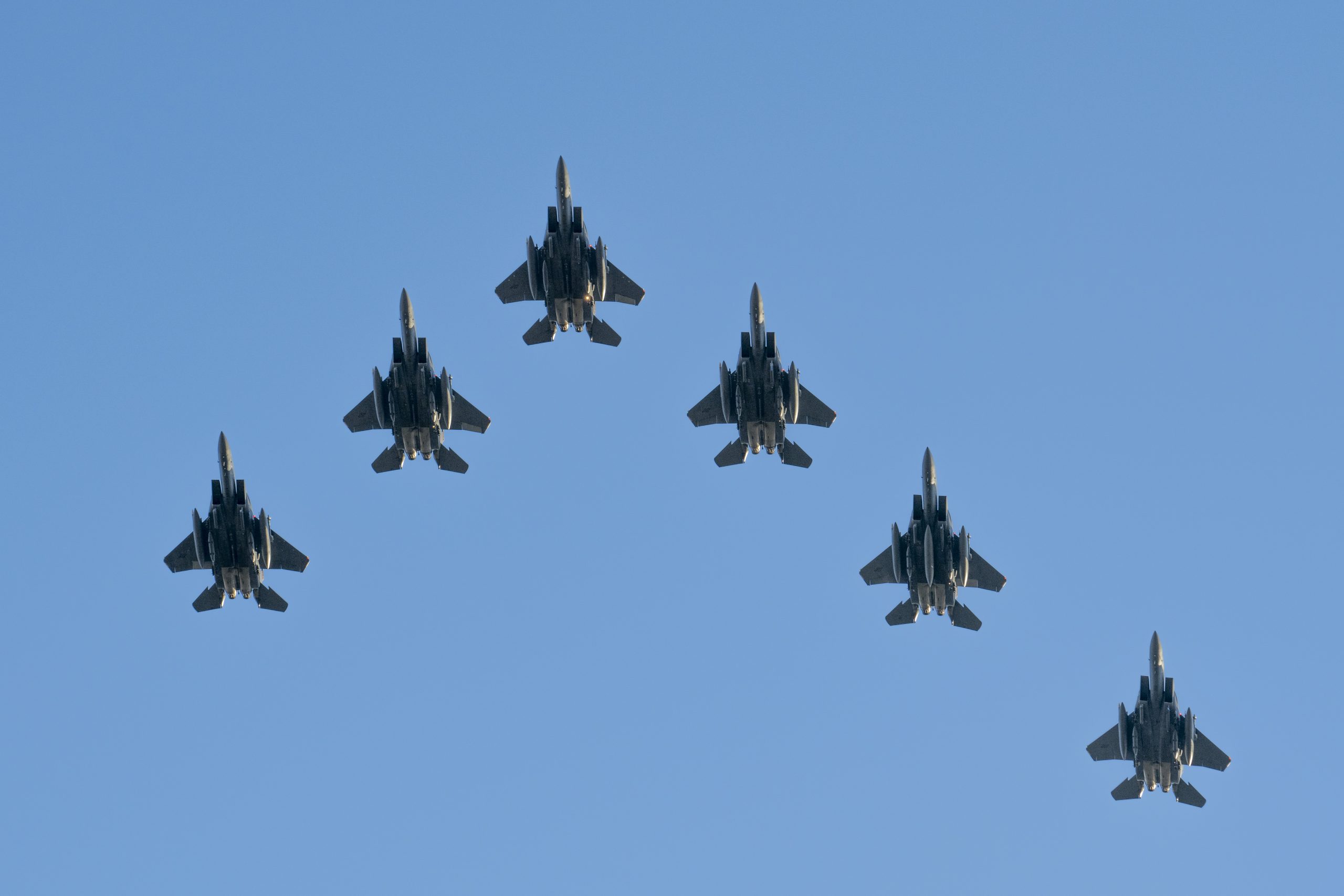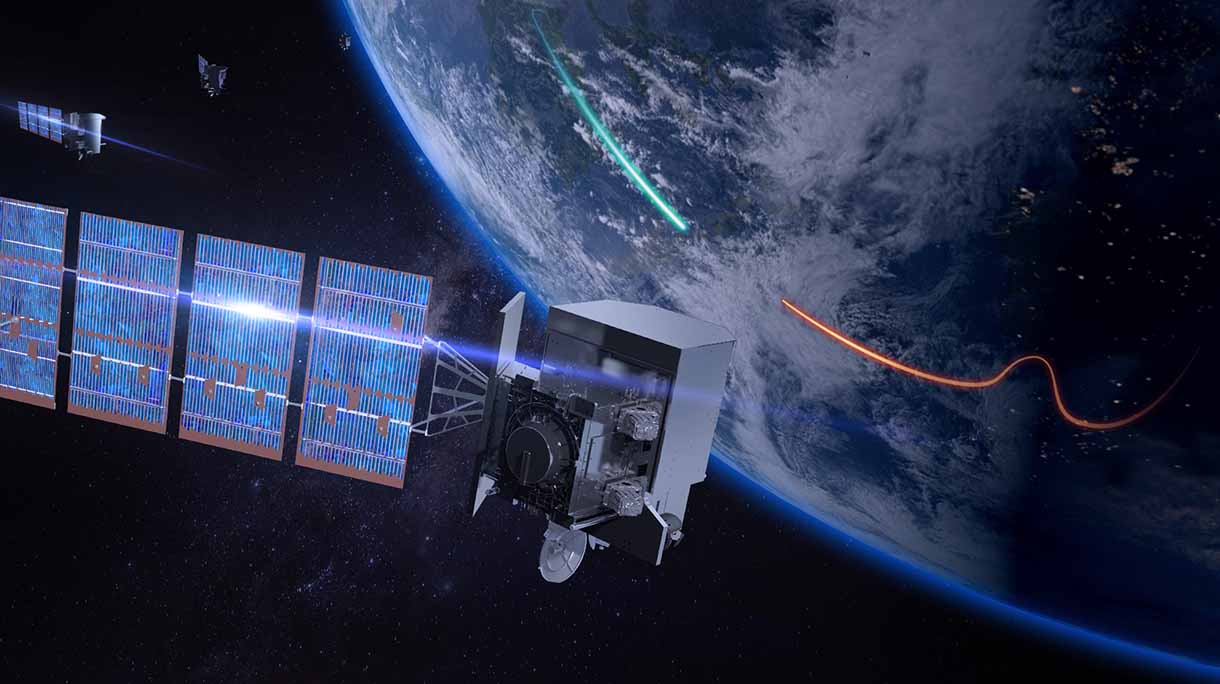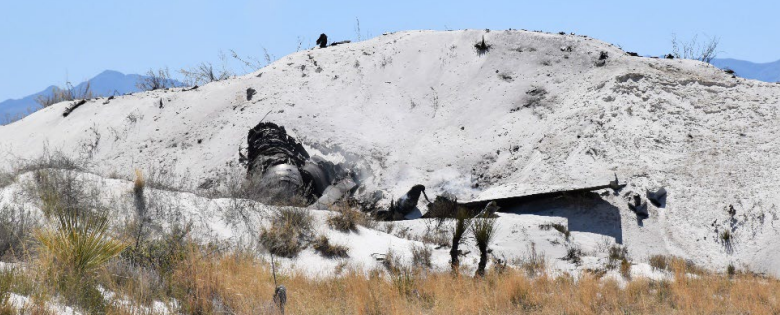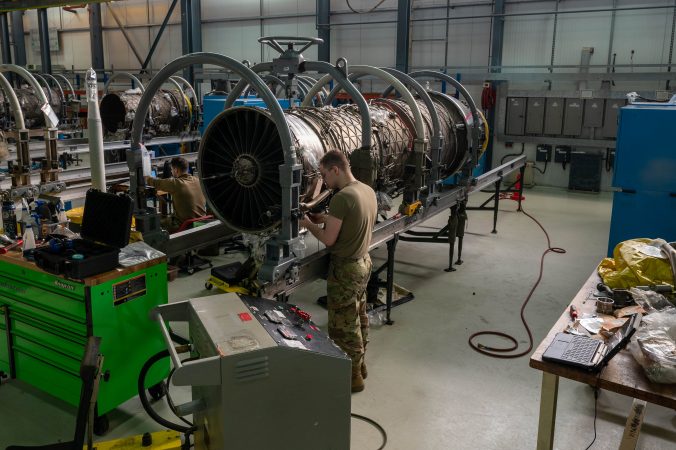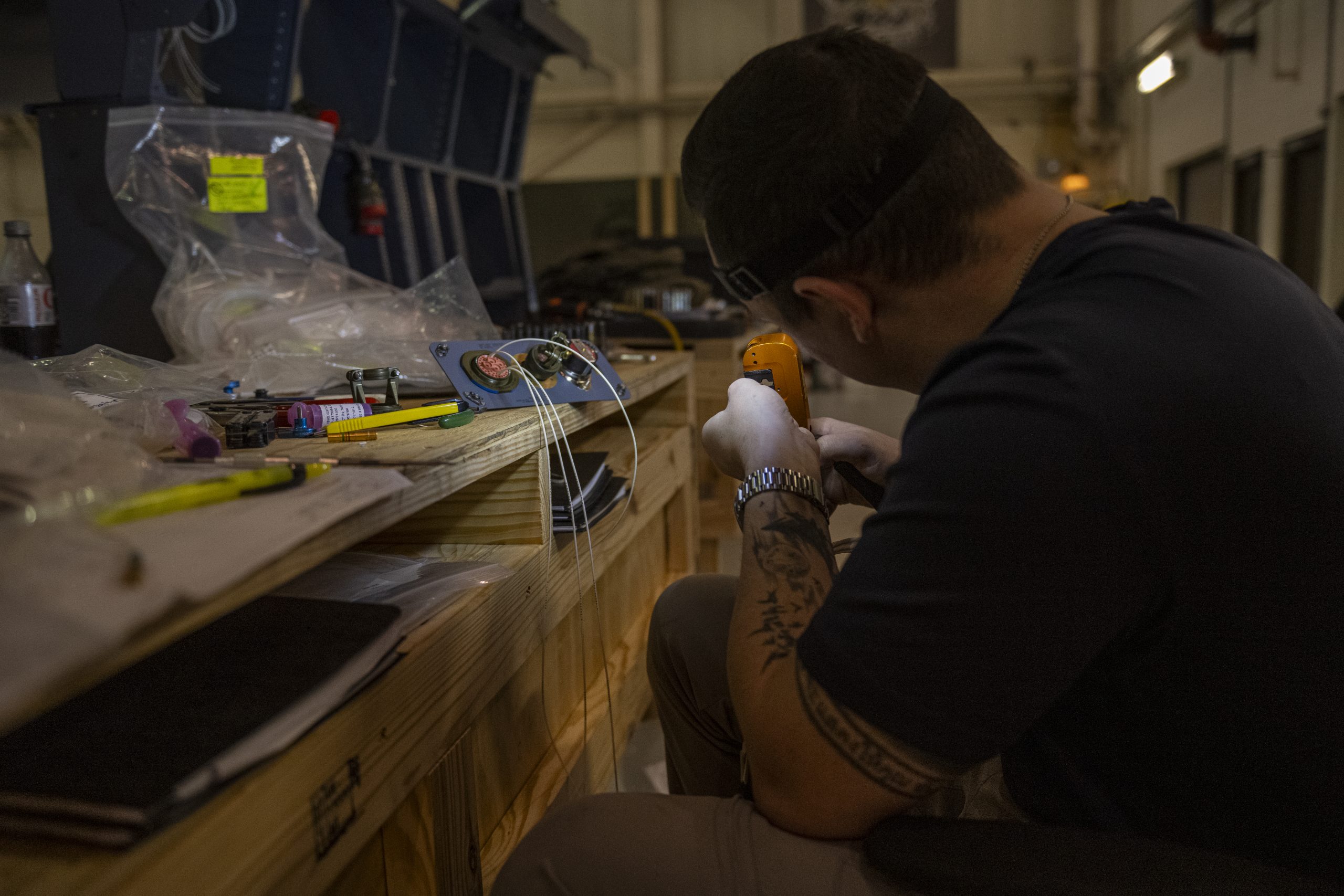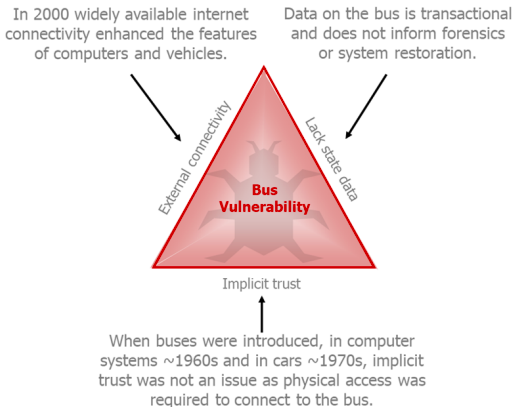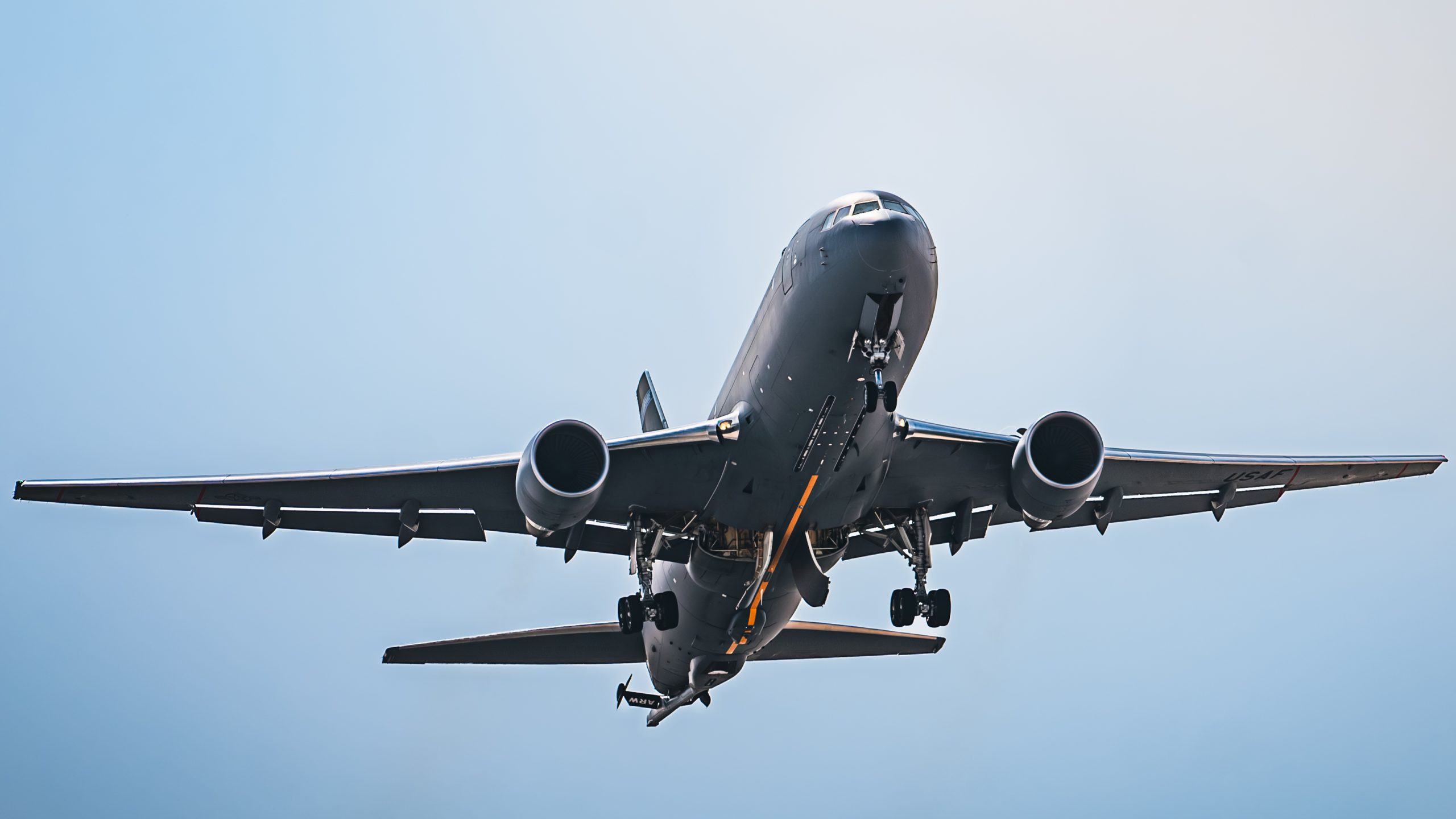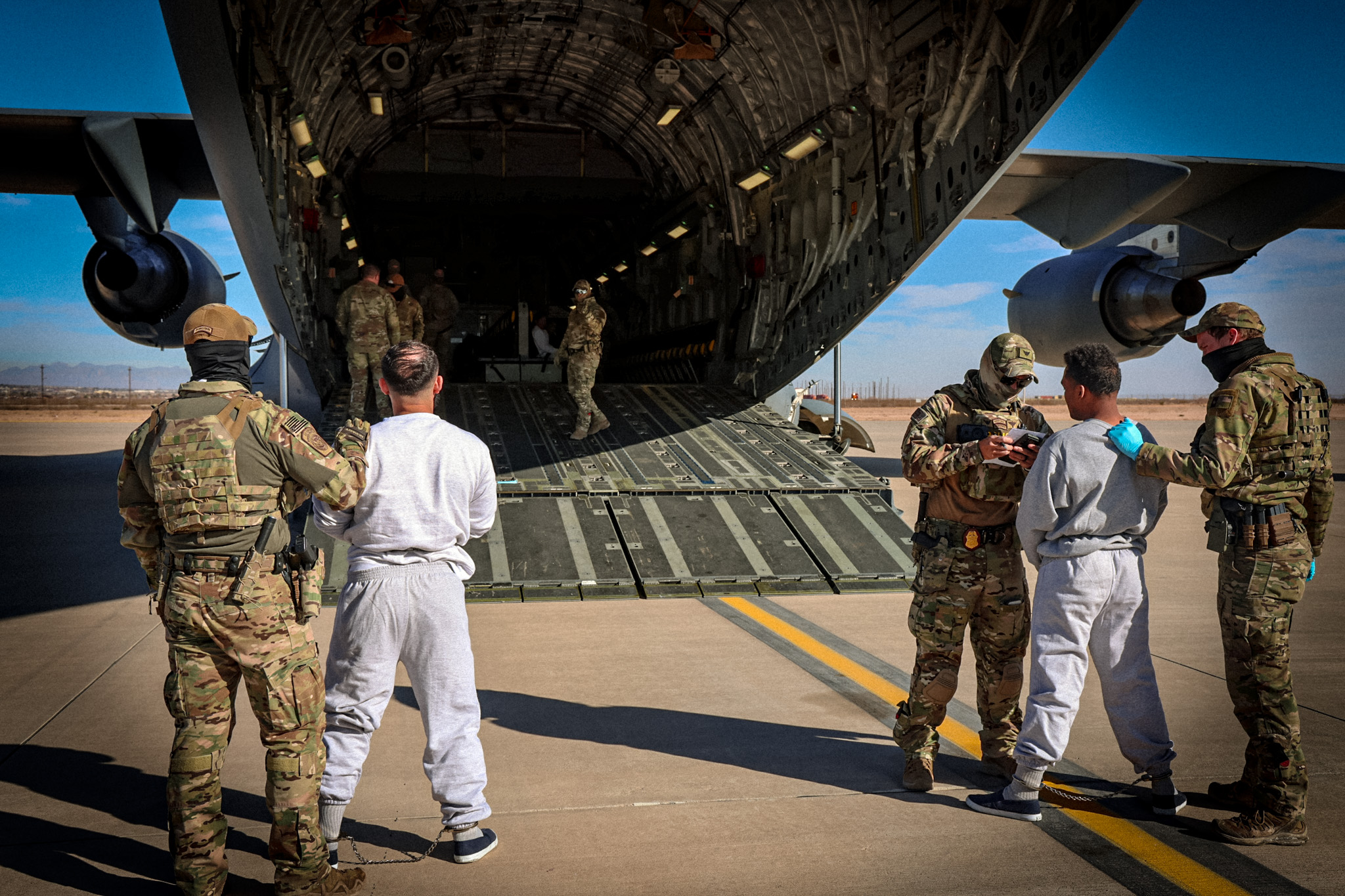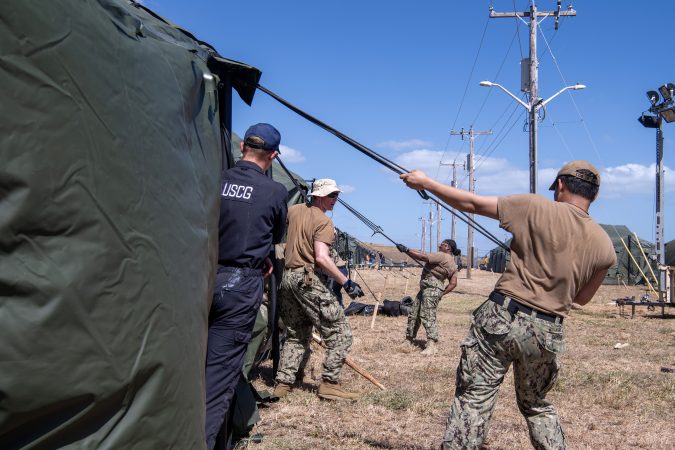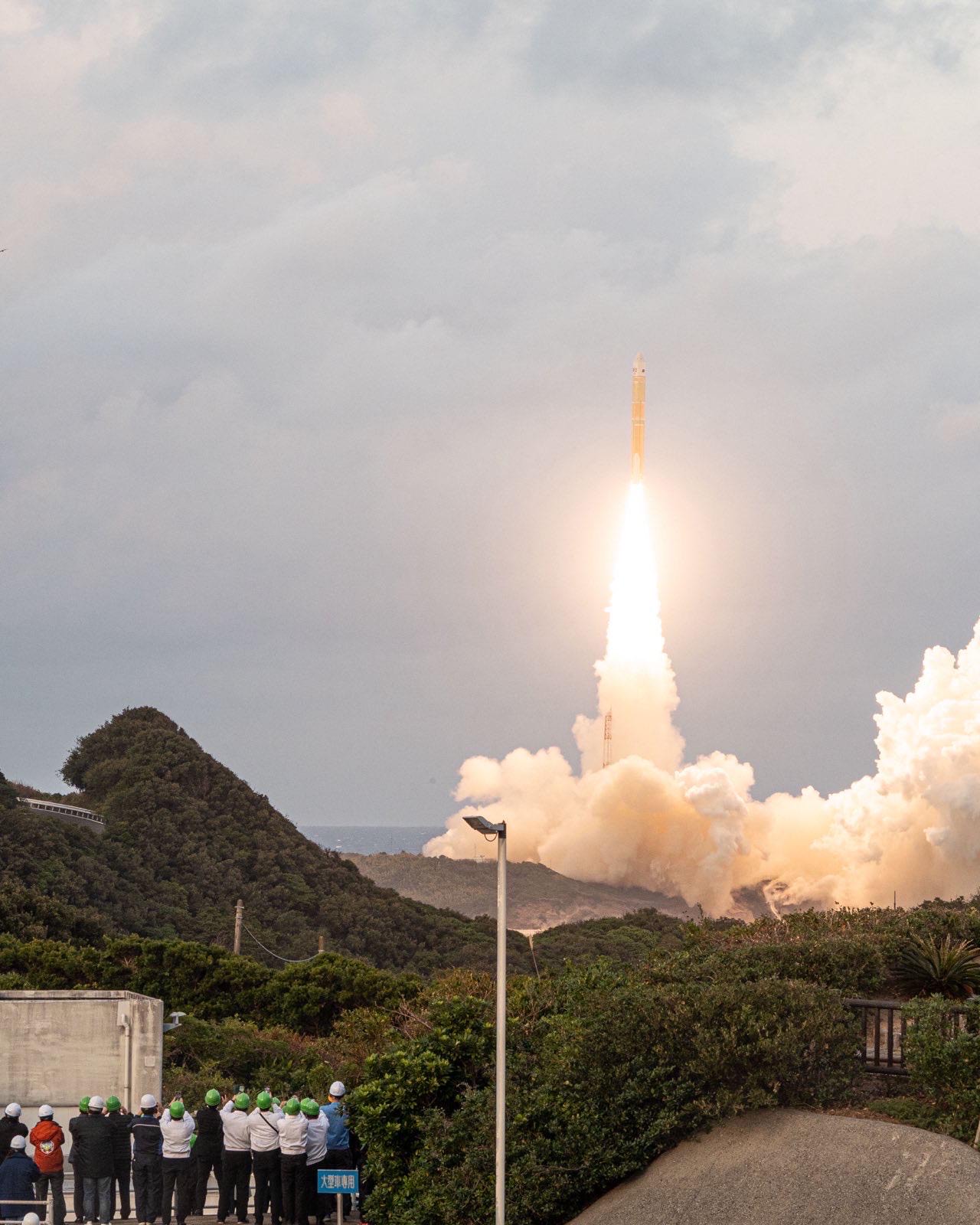A week after ordering thousands of civilians and service members back to full-time in-person work, the Department of the Air Force has issued a new directive exempting some employees due to a shortage of workspace.
In a memo released Feb. 6, acting Air Force Secretary Gary A. Ashworth noted that the department has a lack of workstations in the Washington D.C. region and across Air Force and Space Force bases both in the U.S. and overseas.
With the current space crunch, some of the department’s civilian employees and service members will continue working remotely until additional capacity becomes available. The memo, however, did not specify how employees or units will be selected for telework eligibility at this time.
The Air Force previously instructed all commanders, directors of major commands, and field leaders to cancel telework and remote work agreements and require employees within 50 miles of their official worksite to return to in-person duties by Feb 7. The guidance was part of Defense Secretary Pete Hegseth’s push to end all remote work across the Department of Defense.
To address the shortages hampering that push, Ashworth wrote in his memo that the DAF Infrastructure Council “will review significant facility requirements,” including large-scale facility sustainment, building maintenance, repairs, and leases.
However, that process could both protracted and costly. In testimony to Congress last year, then-Assistant Secretary of the Air Force for Energy, Installations, and Environment Ravi Chaudhury said the department had $46.8 billion in deferred maintenance and repairs. That backlog was on top of some $5.4 billion the department requested in 2025 for Facility Sustainment, Restoration, and Modernization.
The Air Force has projected that rising inflation, supply chain disruptions, and a shortage of skilled labor will exacerbate the repair backlog moving forward. Meanwhile, around $3.45 billion in new construction is slated for 2025.
The effort to bring Air Force employees back to on-site work faces other challenges as well, including the renegotiation of union contracts with civilian employees, as telework provisions within these agreements may need to be adjusted.
According to a 2024 report by the U.S. Office of Personnel Management, approximately 74,000 of the 155,000 civilian employees who worked for the Air Force in fiscal year 2023 teleworked, though the report noted that some employees may have been counted twice. This represents about 48 percent of the workforce, out of the 95 percent of employees across the department deemed eligible for telework.
An Air Force spokesperson could not provide the current number or percentage of teleworking employees as of Feb. 10, despite the fact that the service had to provide the Pentagon with data on its number of remote work arrangements by Feb. 7.

